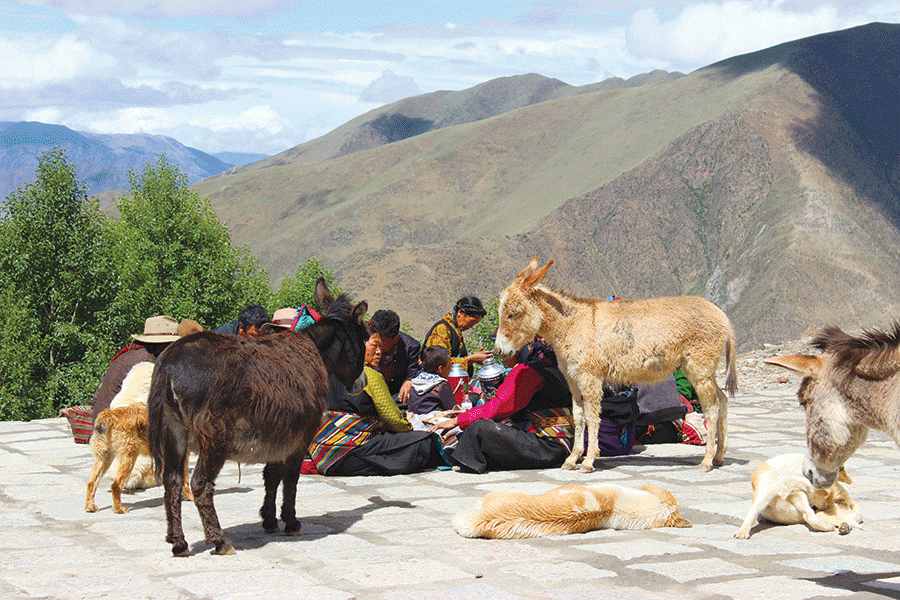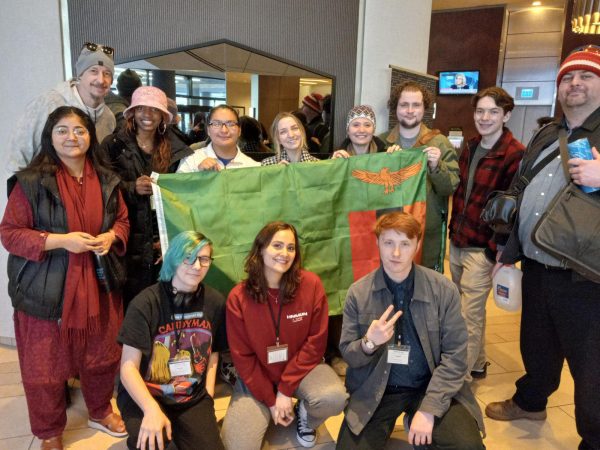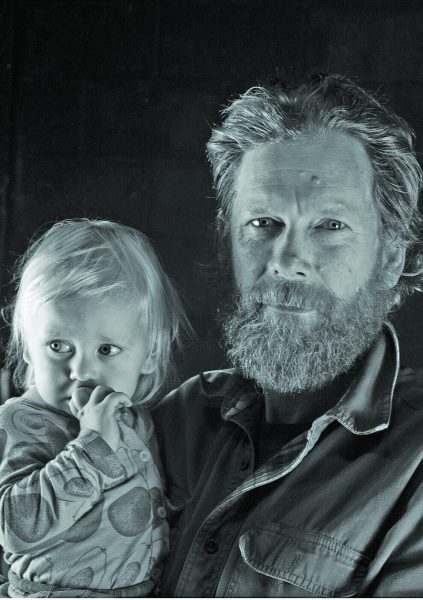Tibet
Ruled by China, led by Buddhism
Tibetans sit outside a monastery to eat their lunch, and the animals gather around
After a 2-week-long journey halfway around the world, as part of a Wisdom Study Abroad Tour with Castleton Professor Jim Hagan this summer, it is hard to believe that I would experience more of a culture shock returning to the United States than I did when entering Tibet, but somehow I did.
Hagan leads this trip, among a few others, every summer to teach people about Mahayana Buddhism in the countries of India, Tibet, Nepal, Cambodia and Bhutan. Flying from JFK international airport over the North Pole, our group of 26 began its journey in Chengdu, China. From there we traveled to Lhasa, Tibet where we stayed for five days before continuing to Shigatze, Gyantse, Sakya and Samye.
If there is one thing I learned during my study abroad trip it’s that suffering, no matter the extent, can be overcome, and that a person’s misery and happiness depends on his own perception.
So many Americans take the freedoms they have for granted, and don’t realize that what may be considered human rights in this country are vastly alienated in others. We wake up in the morning, go to work or to school, and maybe salute the flag and say the pledge of allegiance. Some go to church on Sundays, or choose to pray at their local mosque, and others just go fishing. The point is Americans have the freedom to choose the life they want to live, but what if that choice was taken away? What if everything you worship or hold sacred is destroyed? Would you fight back?
China invaded Tibet in 1950; its occupation resulting in the torture, imprisonment and death of hundreds of thousands of Tibetan people. After a failed uprising in 1959, the Dalai Lama, Tibet’s political and spiritual leader, fled into exile in India followed by tens of thousands of Tibetans. Many Tibetans, though, had no choice but to stay behind, and live in what would soon become “one of the most repressed and closed societies in the world,” according to Senator Robert Menendez, chair of US senate committee on foreign relations, 2012.
This week, July 6, the Dalai Lama celebrated his eightieth birthday, but none of the Tibetan people were allowed to celebrate with him, unless they went against the Chinese government. Any photos or references to the current (fourteenth) Dalai Lama are banned throughout Tibet, and anyone found in possession of his photograph will be prosecuted.
Just last year, a Tibetan monk, Tharhod Gyaltsen from Drongna Monastery, was given an 18-year sentence after Chinese police found banned pictures and teachings of the Dalai Lama in his room, during a raid.
Even so, some Tibetans, mainly nomads, celebrated the Dalai Lama’s birthday, and pictures of their celebrations are cropping up across the World Wide Web.
It’s easier for nomadic families to celebrate the Dalia Lama than it would be for monks and nuns though, because the Chinese government can’t keep track of them at all times, but places officials in every monastery to monitor and even control religious activity. Since 1949, the Chinese government has destroyed or damaged over 6,000 monasteries and shrines. Buddhism is the central part of Tibetan life, but the Chinese police are strictly monitoring this peaceful way of life with stations situated either right outside temples, or even inside the monasteries.
The main purpose of the Buddhist religion is to liberate people from mental and physical suffering, and to break the cycle of rebirth to attain nirvana. I can only imagine how hard it must be to study your entire life ways to remove suffering, and to live in a society in which suffering is all around you. However, according to Buddhist philosophy, living is suffering i.e. life includes pain, diseases, disappointments and eventually death. From the day you are born, you are slowly dying, but the truth about suffering is that it can be overcome, and happiness can be attained by living one day at a time.
Tibetans are some of the most amazing people I have ever met, and I couldn’t believe how enraptured they were by a small group of Americans visiting their country. Everywhere we went, the Tibetan people welcomed us in, giving us Khatas (or white scarves) symbolizing purity and compassion, and it felt as though they would give us the shirts off their backs if we had asked. One of the most memorable experiences I had, which I will carry with me for the rest of my life, happened at Sera Monastery located 1.25 miles north of the capital of Tibet, Lhasa.
After helping an elderly Tibetan woman down a steep flight of stairs, another Tibetan woman came over and grabbed my hand with a look of deep compassion in her eyes. She looked at me, and made a gesture that my hand felt cold by rubbing it against her cheek, then she put her arm around my shoulders and started walking with me over to a small group of woman standing off to the side of the little courtyard. I couldn’t understand their language, but the act of gratitude and kindness is one I rarely have seen in the states.
Walking down the streets of New York City or Boston, people don’t even seem to see you. They keep their eyes to the ground and walk at a brisk pace, but this woman seemed to not only see me as I stood in front of her, but also to see the essence of my being. It’s the quiet moments in life when the world stands still for a minute, that I can see the good in people amidst the terror, greed, and power some appear to relish. It’s when people realize that reality is what they make of it, and complaining about their suffering doesn’t fix anything, that the world becomes a better place. If the Tibetans got anything right, it’s that fighting, hatred and anger never solved anything, and compassion for others is an essential part of the path to enlightenment.
Kayla served as a general assignment reporter and photographer for the spring 2013 semester. She returned for the Fall 2013 and spring 2014 semesters...










